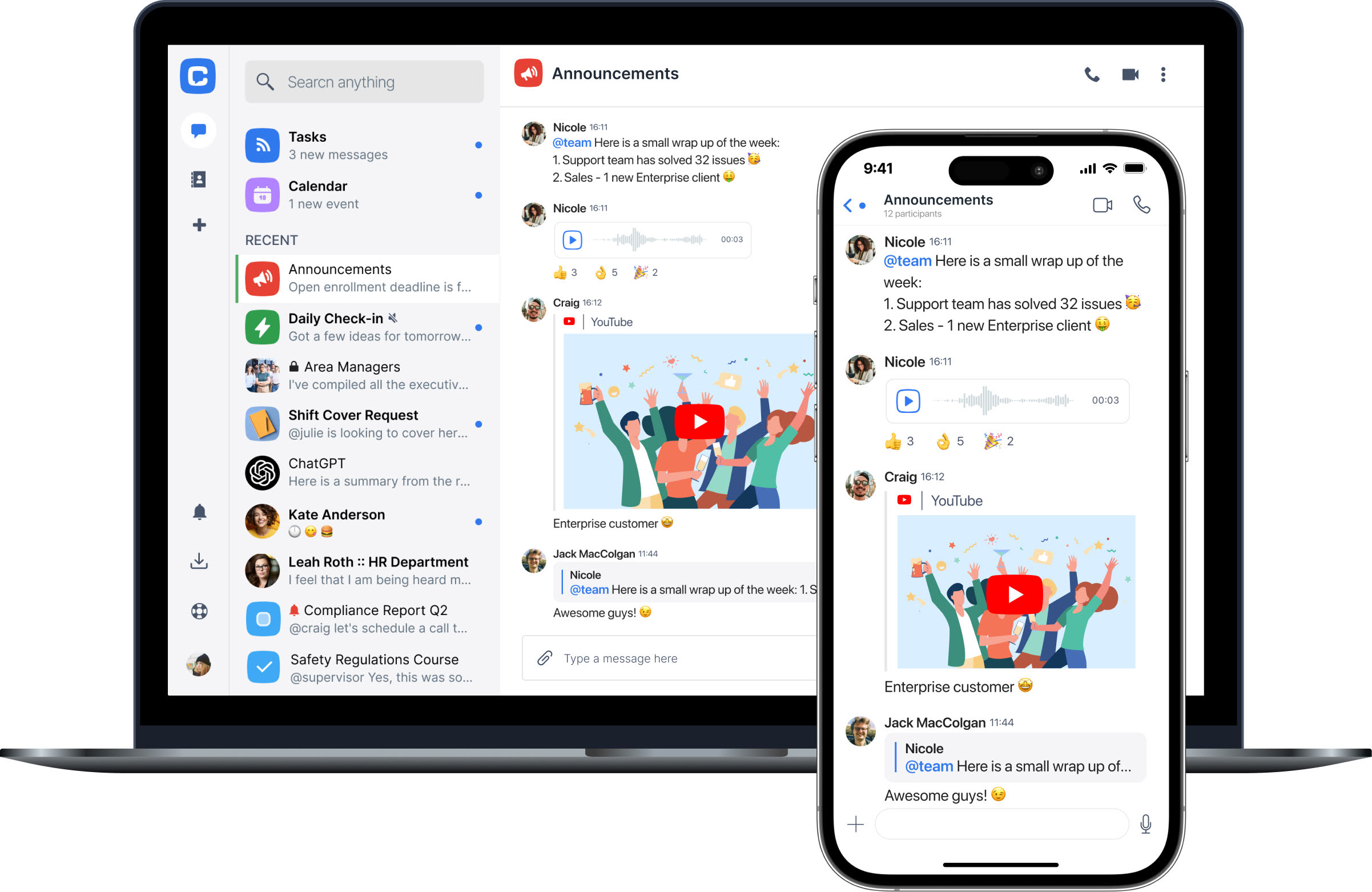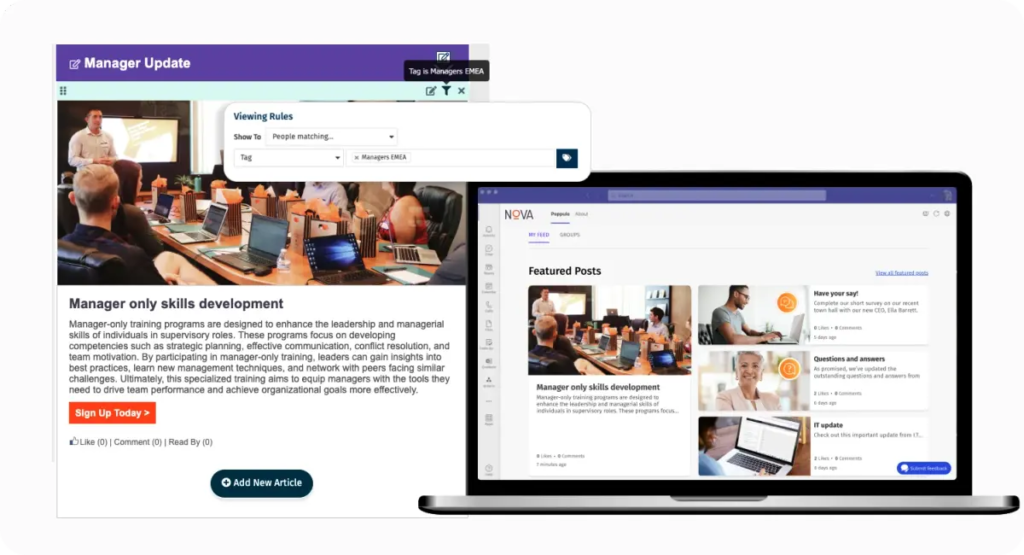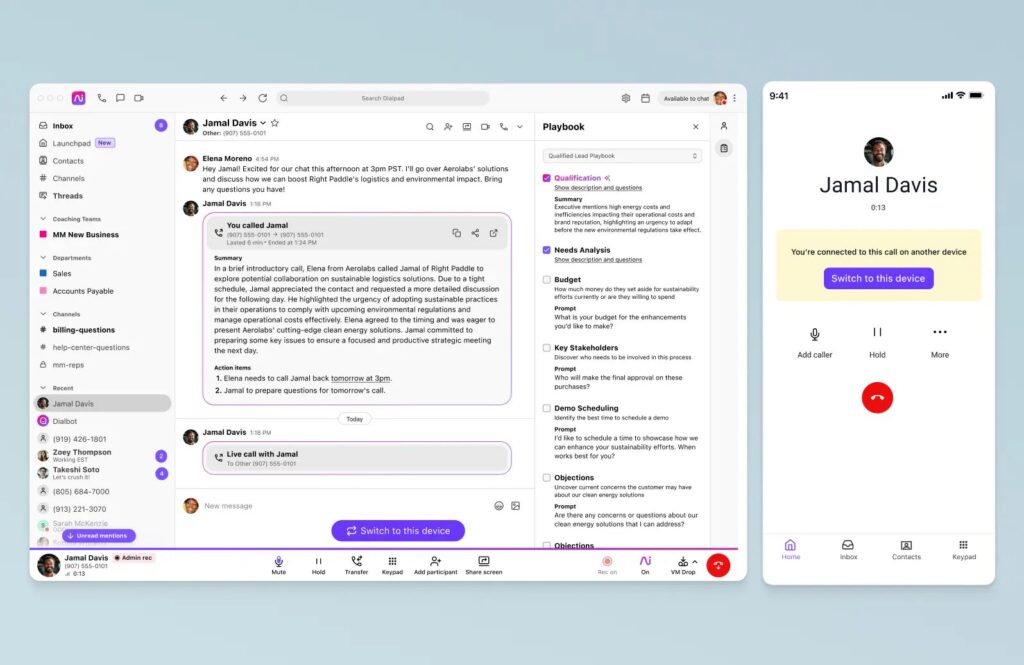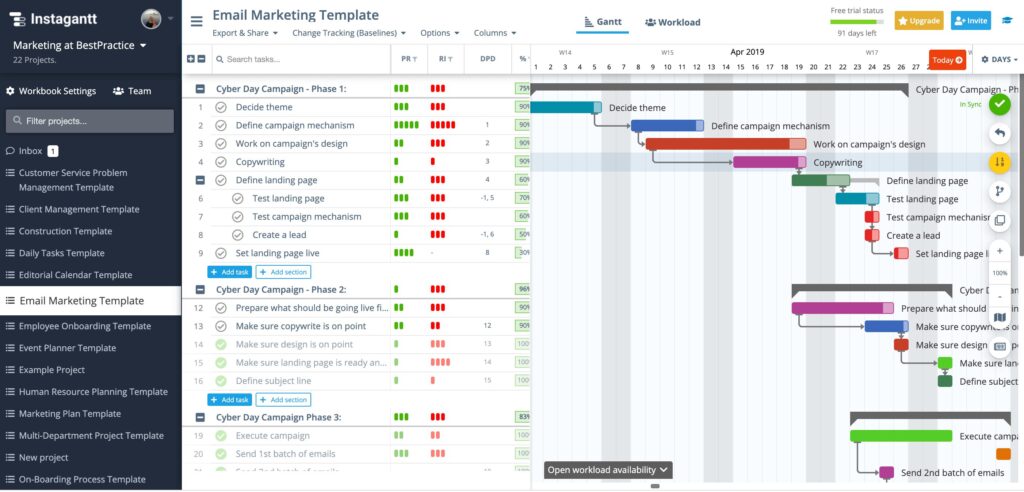A good communication strategy glues a business together. A bad communication strategy can pull it apart. An effective manager is always looking for the best mediums of communication for their business, but workplace communication isn’t just a matter of keeping in touch. In fact, it plays a critical role in fostering collaboration, improving productivity and creating a positive work culture.
Truly effective communication strategies mean understanding that your team is made up of individuals with unique personalities and different workplace communication styles. This diversity of communication preferences requires managers to tailor their approach, using a variety of tools and methods to ensure that each message is understood and well received. How each team member communicates with colleagues and customers has a significant impact on your business.
By adopting business communication strategies that are both flexible and inclusive, you can bridge gaps, resolve misunderstandings, and foster stronger relationships within your team and with customers.
What are communication strategies?
In simple terms, a communication strategy is a planned approach to exchanging information effectively within a business. It ensures that messages are delivered clearly, understood by the audience, and drive the intended outcomes. Workplace communication strategies help reduce misunderstandings, strengthen relationships, and keep teams aligned with business goals.
There are four main types of communication strategies:
- Verbal communication – Sharing information through spoken words, such as meetings, phone calls, or video conferences. Ideal for real-time interactions and discussions requiring immediate feedback.
- Non-verbal communication – Conveying messages through body language, gestures, facial expressions, and tone of voice. Often communicates emotions and attitudes, complementing verbal communication.
- Written communication – Sharing information through emails, reports, memos, and instant messages. Ensures clarity, creates a record, and works well for detailed or complex information.
- Visual communication – Using images, charts, infographics, and presentations to convey information. Simplifies complex ideas and makes messages easier to understand and remember.
By recognizing these types, managers can choose the right approach for the audience, context, and message. This understanding sets the stage for effective communication strategies in action.
Let’s talk about effective communication
An effective communication strategy means the communicator gets the message across that they set out to convey. But there’s more to it than just passing on information accurately. According to employee communication statistics, companies with strong internal communication see higher productivity and engagement. The way you communicate, especially within the workplace, is also crucial.
Effective communication is not just about sharing information, it is about creating an environment where ideas are openly exchanged and clearly understood. It involves considering the needs of your audience, adapting your communication style and choosing the best medium to ensure your message resonates. Whether in face-to-face meetings, emails or virtual conversations, the clarity and tone of your message is key to fostering better relationships and ensuring successful outcomes.
Poor communication strategies cause problems: errors, lower productivity, and staff and customer dissatisfaction. But when information is delivered bluntly, impersonally, or impolitely, it also affects employee morale. That’s why it’s important to avoid one-size-fits-all communication methods and instead tailor your approach to meet the different needs of your team. For example, one employee may prefer a detailed written explanation, while another may thrive on quick, verbal communication.
How you speak to your team, especially as a manager, is vital in building a cohesive, committed, and contented team. A key aspect of this is ensuring that all team members feel respected and valued, which can be achieved through active listening, empathy and regular feedback. It’s certainly worth looking at ways to boost your oral communication and ensure your written communication sets the right tone. In addition, cultivating a culture of two-way communication helps employees feel heard and engaged, boosting productivity and morale.
Chanty can really help you manage different communication strategies in the workplace. With our team book and instant messenger, you can organize all your projects, pin messages, and highlight team members to communicate effectively with everyone. Chanty’s versatile platform also allows for tailored communication, ensuring the right message reaches the right person at the right time, whether they prefer quick chats or in-depth discussions. With easy communication, your teams can focus on getting the job done and meeting deadlines.
Pexel.com
The five most important communication strategies
Not everyone communicates in the same way; it’s helpful to be aware of some basic communication strategies that may help you in the workplace.
A good communication strategy can refer to your overall internal strategy (how you communicate with team members, both office-based and remote workers), but you might also develop communication strategies for individual business initiatives where a specific approach is needed.
For example, your business may be considering digital transformation. To ensure this is implemented successfully, you may need to formulate a communication strategy that addresses any relevant issues concerning that digital transformation.
That strategy should identify goals and also describe how you will measure the progress of those goals. You might use SMART (Specific, Measurable, Achievable, Relevant, and Time-Bound) goals as an integral part of that communication strategy. To achieve your digital transformation goals, you may want to think about:
- Communicating the need for change (why you are doing it) and building awareness.
- Ensuring all your employees engage with and embrace the needed changes.
- Encouraging support for the changes through understanding why it is needed.
- Addressing any resistance and seeking to reduce it.
Here are some important communication strategies that you can use to make things much easier for yourself and those around you:
1. Active listening
Active listening involves paying attention to what someone is saying, asking questions to clarify any misunderstandings, and responding in a way that shows you understand their perspective. It also involves nonverbal communication, such as maintaining eye contact and using body language to show you are engaged in the conversation.
2. Being clear and concise
Communication should be clear and concise to avoid misunderstandings. Use simple language and avoid jargon. Be specific and provide examples to illustrate your points. Make sure you convey the message you intended.
3. Empathy
Showing empathy involves understanding and acknowledging someone else’s feelings, thoughts, and perspectives. It helps build trust and rapport, and it makes the other person feel heard and valued. Demonstrating empathy creates an environment that promotes open and honest communication.
4. Asking for feedback
Asking for feedback is a key part of effective communication. It shows that you are interested in improving and value the other person’s opinion. Feedback can help you identify areas where you need to improve and help you understand how others perceive you.
5. Being adaptable
Communication should be adaptable to the situation and the audience. It’s essential to consider with whom you communicate and adjust your communication style accordingly. For example, you might use different language and tone when talking to a colleague than a client. Being adaptable ensures that your message is received and understood as intended.
Chanty, as a communication tool, can be really useful when factoring in your team’s different communication strategies. Whether you share a voice message, jump on a video call, or create dedicated threads to help your team stay on topic, you can adapt your approach to the different professional communication styles in the workplace.
Tools to keep up effective communication strategies
So, we’ve established that an effective communication strategy is important, and we’ve also looked at the different communication styles in the workplace that you might find among your colleagues. Now, let’s look at the tools you can use to ensure effective communication strategies in your workplace.
1. Video calls
You’re probably already using video calls to communicate with your teams, but it’s worth emphasizing that these are a great way to stay in touch with all the different communicators on your team.
Personal communicators will appreciate seeing the facial expressions and body language of all involved. And you can easily give a concise overview to those on your team who communicate more intuitively. Moreover, with the right software, such as Chanty, you can share your screen and provide all the details necessary for your functional and analytical communicators.
For teams working remotely or in hybrid environments, video calls provide a sense of connection and help bridge the distance between team members, fostering better understanding and engagement. When hosting a video call, remember that not all participants will want their cameras on, and make sure everyone knows how and when to ask questions. To increase inclusivity, consider offering a mix of virtual meeting options, such as audio-only calls for those who prefer them.
2. Instant messaging
This is another staple tool. It’s a great way to send short, informal messages that can easily be digested and responded to. It can also be highly effective at keeping team members updated on current projects.
With Chanty, you can create instant messaging threads for each project, ensuring the relevant people are included. Thus, you can maintain focus and productivity as your projects progress.
Instant messaging is particularly useful for teams with members in different time zones, as it allows asynchronous communication without disrupting workflow. However, be aware that you may need to jump on a video call from time to time to provide more detail to your analytical or functional communicators. Including an automatic status indicator for when someone is available or busy can also streamline communication and avoid interruptions.
3. Collaboration tools
Using collaborative tools to help manage your projects can be a great way to communicate with your team and ensure everyone is always on the same page.
Software such as Chanty allows teams to easily customize Kanban boards. You can assign tasks, set deadlines, and control the status of projects so your team is fully informed regardless of their different communication styles in the workplace.
For example, your intuitive communicators will be able to clearly see the project’s end result, and your functional communicators will be able to identify the process of how exactly you’re going to get there.
Collaboration tools can also integrate with other business tools, centralizing communication and making it easier for teams to manage their tasks without having to switch platforms. These integrations can automate repetitive tasks, saving time and reducing manual effort.
What are the most popular collaboration tools available that will help enhance your communication strategy?
| Tool | Key features | Benefits for effective workplace communication |
|---|---|---|
| Chanty | • Create tasks from messages • Assign tasks by people, status, or deadlines • Central hub for messages and projects • Easy access to message history | • Combines messaging and task management in one platform • Supports both quick chats and detailed discussions • Reduces miscommunication and boosts accountability • Simplifies follow-ups and progress tracking |
| Poppulo | • Multi-channel employee engagement • Digital signage for key updates • Connected office features | • Ensures messages reach the right audience at the right time • Increases employee engagement and transparency • Encourages participation and feedback • Enhances workplace communication experience |
| Dialpad | • Unified platform: voice, video, messaging • Integrates with existing tools • Works on multiple devices and OS • Strong security protocols | • Centralizes communication for remote and hybrid teams • Streamlines information sharing and reduces silos • Provides secure, reliable channels for sensitive discussions • Enables fast, flexible real-time communication |
| Instagantt | • Visual project tracking • Drag-and-drop interface • Task assignment and progress tracking • Read-only client access | • Provides clear project visibility at a glance • Supports analytical and visual communicators • Enhances accountability and clarity of responsibilities • Promotes efficient collaboration with minimal confusion |
Chanty |
Chanty’s team communication software can make your communication strategy easier to enforce. It offers many integrations, allowing you to keep the tools you may already use. You can keep in touch with all your team members, from group messaging to video conferences.
Features:
- Create a new task from scratch a new task from scratch
- Turn a group or individual message into a task with a simple click
- Assign tasks by people, status, or dates.
- Provides a single hub for communication and collaboration
- Accessing message history and finding team members with a simple click is easy.
Poppulo

Poppulo provides you with the right channel to engage every audience. Better business outcomes indeed rely on better people experiences. You can drive employee engagement and productivity, enable your return-to-office, and engage your customers. That is all made a reality with Poppulo.
Features:
- Reach employees when and where they need it with engaging comms across multiple channels designed to make an impact.
- Leverage digital signage to create unique communications experiences to inform and delight your customers.
- Transform your office into an employee magnet with an intelligent, connected office that supports collaboration and productivity.
Dialpad

Dialpad is a cloud-based collaboration tool that consolidates all synchronous communications in one place. It allows you to make everything from simple voice calls to file sharing with team members or clients. Dialpad is ideal for remote or hybrid workers.
Features:
- Unified communications.
- Integration with a wide range of existing tools.
- Works on a wide range of devices and on all major operating systems.
- Robust security measures.
Instagantt

Instagantt is an ideal solution for smaller businesses that may not need a large management and communications suite. It offers a simple and user-friendly way to manage projects and ensure high levels of collaboration with all team members. Managers can track progress and timelines to ensure efficient workflows.
Features:
- Clients can be added in ‘read only’ mode so they can track progress and developments.
- Easy drag-and-drop interface makes it simple to create and adjust charts.
- Assign tasks and track progress.
- Manage workloads and projects
- Easy collaboration
Social media
Workplace-based social media networks are a great idea to introduce a more relaxed atmosphere to your team’s communication strategy. Many will already be used to the format, so they can hit the ground running.
Employees can upload images and short videos and communicate informally between departments. Managers can also share updates instantly across the company, reaching all employees easily.
While this probably won’t become the principal method of communication within your company, it does provide a fun break from the more traditional methods. Your communicators, in particular, may enjoy the opportunity to communicate more naturally. Social media tools can be used to build team morale and foster collaboration through informal channels, encouraging open dialogue and creativity.
Intranet
A centralized communication, such as a company intranet, can be a great way to communicate with teams and across departments. Messages, document sharing, news updates, and more can all be shared safely and securely, whether your team works in the office or remotely.
This can be a great way to communicate with your analytical and functional communicators, as all facts, figures, and details are readily available in one place. However, be aware that intuitive communicators may find having access to so much detailed information a little distracting. So, always check in with team members to confirm they’ve seen essential announcements.
An intranet also serves as a knowledge base where employees can access past communications, project histories, and important documents, which helps ensure consistency in future decisions. In addition, consider integrating AI-powered features into your intranet to make it easier for team members to search and find relevant information quickly.
Keep communicating
An effective communication strategy is a multilayered effort. It requires an understanding of people and personalities, good technology, such as softphone systems, and leaders who practice active listening and communicate ideas clearly and consistently. In addition, establishing clear channels for feedback and encouraging transparent dialogue at all levels of the organization will further enhance the effectiveness of your communication efforts.
Effective communication strategies within your team will not only aid the smooth running of your business but also have a knock-on effect on your customer lifecycle touchpoints. The more you actively strive for effective communication, the greater the benefits. Ensuring that your communications are inclusive, empathetic, and adaptable to different needs, you create an environment where both employees and customers feel heard and valued.
Chanty’s accessible and adaptable communication software can help you do just that. It makes communication within your company smooth, clear, and easy, with methods to suit all work styles. Chanty also allows you to integrate different tools and communication methods – such as video calling, instant messaging, and task management – into a single platform, streamlining communication and encouraging greater collaboration between your teams.
By placing communication strategies at the core of your business, your teams can focus less on trying to understand instructions and information and more on the task at hand, increasing their productivity. This in turn leads to stronger relationships within your team, improved decision making, and ultimately better business results.








